This post may contain affiliate links. Please read the disclosure for more info.
As a new homeowner, there is a lot of excitement and freedom, but once these feelings fade and you realize you are responsible for looking after and maintaining the investment that you poured your hard-earned money into it can become a little frightening. I have owned several homes, and I have compiled a list here to help every new homeowner know how to deal with some of the basic things they must know. From simple repairs, maintenance and keeping your home safe to more complex topics don’t forget to review some of the linked items below.

Jump To:
Every new homeowner must know how to do the following:
• Deal with their home when the power is out – for example how to get out of the garage if there is no power?
• Perform simple repairs – how to remove a stripped screw?
• Perform maintenance on washers, dryers, vents, and more – how to clean a dryer vent?
• Where can you dig? Know what to do before digging around your home?
• How to hang a picture frame?
The list of things every new homeowner must know is just a simple list but read below on info to deal with these items and much more.
How to bypass the garage door opener when the power is out?
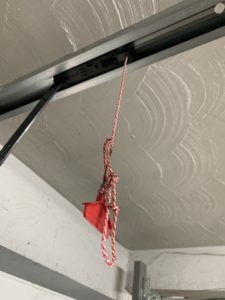
As a new homeowner, you may find yourself in a situation where the garage opener is not operating or has lost power, you may still need to open the door for whatever reason. To achieve this, you want to pull the emergency disconnect cord, the red handle hanging near the garage center rail, (as seen in the picture) which will disconnect the garage door to the drive mechanism, allowing you to open the door manually. Be careful as the door will be heavy and can fall back down. You may want to get someone to help you lift the door.
How to repair a loose doorknob?
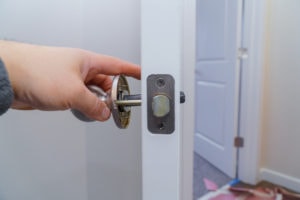
Nothing is worse than pulling on a doorknob and have it rattle around or worse not turn the latch properly and open the door. This task will require a screwdriver and a few mins of your time.
The cause is simple – over time screws will become loose from continually using the doorknob. Just use your screwdriver to tighten the two screws found on the inner side of your door.
If your doorknob is very loose, you may need to press on both sides to ensure that both parts of the doorknob are contacting the door to ensure it will operate as expected once the screws are tight. Hand-tighten the screws, and you have repaired a loose doorknob.
How to clean a dryer vent?
- Clean the dryer lint screen before or after every single load.
- Clean the dryer vent line that sends hot air and lint outside your home two times per year. Cleaning the dryer vent is essential maintenance since lint trapped in this line can cause a fire and reduce the performance and overall life of the dryer.
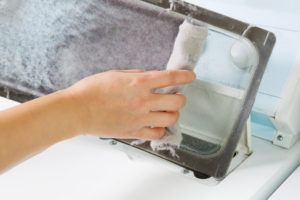
- To clean the dryer vent line, you will need to disconnect the dryer power and move the dryer to allow you to gain access to the connection of the vent line on the back of the dryer.
- Unscrew the vent line connected to the back of the dryer.
- Use a long vacuum hose to reach into the vent line and vacuum out any lint that is trapped.
- If needed and possible, disconnect where the vent line attaches to the wall leading out of the home and perform a more thorough cleaning.
- Make sure to reconnect the vent line properly and reconnect the power.
- Finish by moving the dryer back into place.
How to use a wet/dry vacuum?
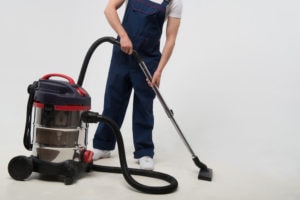
- Wet/dry vacuums are versatile and have many uses from cleaning cars, attaching to woodworking tools and cleaning up wet material.
- The dry vacuum requires no changes and uses an air filter inside the reservoir to keep fine dust particles from being recirculated into the air. Some dry vacuums will use a bag which can get clogged or full and will require emptying and cleaning.
- The wet vacuum portion is simple. Take the top off and remove the air filter before vacuuming water.
- Removing the air filter will allow the water vacuumed up to hit the ball valve causing the vacuum to stop vacuuming once it is full of water.
- Attach the hoses to the wet/dry vac and most come with a flat end for water.
- Once you vacuum the water, you will need to dispose of the water in the vac.
- Some wet/dry vacuums will come with a pump; otherwise, you may want to muscle it to a sink or sump pump if you have one.
- A full vacuum of water can weigh up to 70 pounds! Make sure you have a plan to dispose of the water.
How to maintain appliances: refrigerator, washer, dryer?
- Refrigerator maintenance:
- Clean the condenser coils clean by vacuuming them at least once per year and ensuring they are kept clean from any dust or debris.
- If the refrigerator is running warm first check the temperature settings and if they are correct then ensure the coils are clean.
- Dishwasher maintenance:
- While the dishwasher cleans the dishes, it can build up soap scum or calcium from hard water over time.
- It is a good idea to clean the interior of the dishwasher with a sponge and soap then run it empty to wash it out.
- Be sure to run your dishwasher at least three times per month to keep the seals from drying out and keep things operating smoothly.
- You may also want to remove the interior parts that catch debris and food particles to be cleaned more thoroughly with a brush and detergent since this can become a problem that impacts the dishwasher’s ability to clean properly and drain the water.
- Washer maintenance:
- Once per month run an empty washer cycle with the detergent you usually use and some bleach to help reduce build-up and keep the washer running smooth.
Consider reading: How to prepare your air conditioner for summer?
Make sure you call 811 before digging around your home

Each state has its own 811 call center that is available to take your call before you begin digging around your home to allow you to work with the proper utility company in your area to ensure you can dig safely around any sewer, gas, electric or water lines.
Note: some call centers require a three-day lead time before digging and up to 45 days lead time for stakes to be marked at a dig site. Both can cause delays in your project so plan ahead of time. Call 811 before you dig!
How to remove a seized or stripped screw?
If you encounter a stripped screw, the first thing to do is not make it worse. Avoid using a power tool to try and force it loose. The best method is to get a tightly fitting screwdriver, applying a steady amount of pressure while trying to turn it. You may need to try several different screwdriver tips to find the right size for the job.
Tip: Try using a rubber band placed over the stripped head of the screwdriver.
You can also try a few of the screw extractors on the market. I had luck with SpeedOut from Amazon on a project where I had to remove an old vise from a workbench.
How to eliminate pests: ants, mice, termites, and cockroaches?
Pests enter a home for one or more of the following: water, food, and shelter. While there are many steps you can take to prevent pests from entering your home and steps to take to get rid of them once inside; it is best to try and eliminate any food, water or areas for them to live.
Each pest will require a slightly different strategy, but all are simple enough to add to your home’s maintenance list.
Termites:
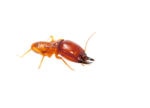
- Termites can be devastating to a home, and the results can leave a homeowner with a financial burden they aren’t ready to take on.
- Double check your insurance to make sure you are covered if you have a problem in your region with termites.
- Termite damage often goes undetected until it is too late.
- The simplest solution is to get an affordable contract with a pest company who will routinely check for termites and handle them early before they can do damage.
- You can avoid termites by taking a few precautions like not storing firewood near the home (at least 20 feet or more away) and use rubber mulch, but if you must use wood then keep it at least 18 inches away from the home’s foundation.
- You will also want to ensure your basement or crawlspace stays dry since a wet crawlspace or basement can be a critical area where termites will feast!
Ants:

- Ants are more active in the warmer months but can appear at any time.
- Ants enter a home looking for food and water.
- Sources that are targets for pests are kitchens due to garbage cans, and food dropped on the floors and pets eating in that room.
- Once an ant finds a source of food, it will notify other ants and before you know it there will be a line of them to and from the food.
- Please be aware some ants, like the carpenter ant, can devastate a home and destroy the wood much like a termite.
- Boric acid or baking soda with powdered sugar can help rid your home of ants.
- You can also mix up a spray bottle with white vinegar and water and spray around windows, doors, cracks and other areas where ants can enter a home this will help reduce ants by eliminating the scent that ants leave behind for other ants to follow.
- Liquid ant bait stations can help, but if you try this method and see ants resist the temptation to kill them.
- At this point they are taking the poison you set out back to the colony where it will help get rid of the problem.
- However, if you see ants and you have tried some solutions you may want to call an exterminator.
Rodents – Mice and Rats:
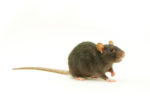
- Mice and rats are trickier.
- A mouse can fit through a hole the size of a nickel and a rat can fit through a hole the size of a quarter!
- Once these rodents make it into a home, they will start multiplying.
- Females can produce a dozen offspring every few weeks!
- Rodents can drop fecal matter at an alarming rate (up to 25,000 fecal droppings a year), they can cause allergies and carry various diseases which can be spread through their fecal droppings.
- Not to mention that rodents carry pests and diseases too!
- Rodents leave a urine trail for other rodents to follow causing the situation to become much worse very quickly.
- You may be able to kill a few with poison or traps, deter them with peppermint oil, but the first way to keep them out of your home is to block where they are entering your home in the first place.
- If you find holes in siding or wood, cracks or gaps in foundations or other points of entry it is essential that you take steel wool and block the openings immediately.
- Once all entry points are sealed, you can use traps and other means to eliminate the rodents trapped in the home.
- Rodents don’t travel far from their food source, and I find that it is best to seal the entry points in warmer weather since at that point rodents may have left the home in search of food, unlike in the winter where they are much less active outside.
- Following this guideline will allow you to seal up the home and leave as few rodents as possible in the house.
Cockroaches:
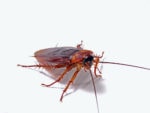
- One pest that carries more diseases than rodents are the cockroaches.
- There are thousands of species of roaches, and they are carriers of all kinds of bacteria like E. coli, harmful pathogens, and various parasites since cockroaches live in bacteria-filled areas like drains and dumpsters.
- Roaches search for water so be sure that you clean up pet water bowls, avoid leaks in pipes, and basement or crawlspaces remain dry.
- Cockroaches are hard to kill and remove once they are in your home.
- A cockroach can live for up to a week without its head and only dies due to not being able to consume water!
- Make sure you keep the garbage outside, away from your home and wipe down countertops and floors regularly.
- To get rid of roaches naturally, you can try diatomaceous earth which is a natural roach killer that will not harm humans.
- Many of these DIY pest remedies will not rid your home if there is an infestation so you may wish to call a professional to deal with the problem.
Conclusion:
I hope this content will help make your journey as a new homeowner a pleasant one.
Consider looking into the following articles to give you more information for various topics as a homeowner and DIY’er.
- What Every Homeowner Must Know: How To Prep Walls Before Painting?
- What Every Homeowner Must Know: Home Plumbing Basics
- What every homeowner must know: Home Electrical Basics
- 15 Ways To Save Money On Home Insurance
- How much does it cost to replace windows?
Please take a moment to subscribe to our newsletter.
Please follow us on social media.
Please comment below on other topics you would like to see content on.


